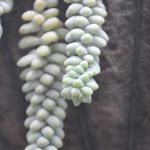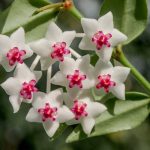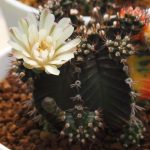Struggling to choose a hoya plant from the plethora of available options? Selecting the perfect one for your space can be overwhelming with the wide array of hoya varieties. Consider mixing and matching or utilize our guide to simplify your decision-making process. Here, we showcase a curated collection of our favorite hoya cultivars complete with names and images for your viewing pleasure.
The lush and diverse landscapes of Southeast Asia are a sight to behold, offering a plethora of plant life. To infuse your surroundings with vibrant colors, sweet fragrances, and verdant foliage, turn to the stunning Hoya Cultivars originating from the heart of Asia. While hoyas may not have garnered the same level of fame as philodendron cultivars or pothos varieties, their popularity has undeniably soared in recent years.
Despite their origin in humid climates, some hoya plants thrive best in cooler temperatures. Bringing a hoya into your living space allows you to bask in its delightful fragrance and marvel at its rich green leaves.
Many hoya varieties boast unique and striking blooms, injecting pops of colors to elevate your indoor or outdoor decor. With over 200 species available, we present 51 exceptional options that could transform your garden into a mesmerizing oasis.
Hoya Affinis

Scientific name: Hoya affinis
Hailing from the Solomon Islands, these plants exude a powerful aroma, featuring velvety leaves and crimson blooms. Also known as the Red Wax plant due to its vibrant red flowers, it thrives in temperatures between 65 and 80 degrees F under filtered sunlight.
For optimal growth, ensure consistent watering, as overwatering can be detrimental. Plant in well-draining, moist soil, ideally in USDA hardiness zone 10 for outdoor cultivation.
Hoya Albiflora
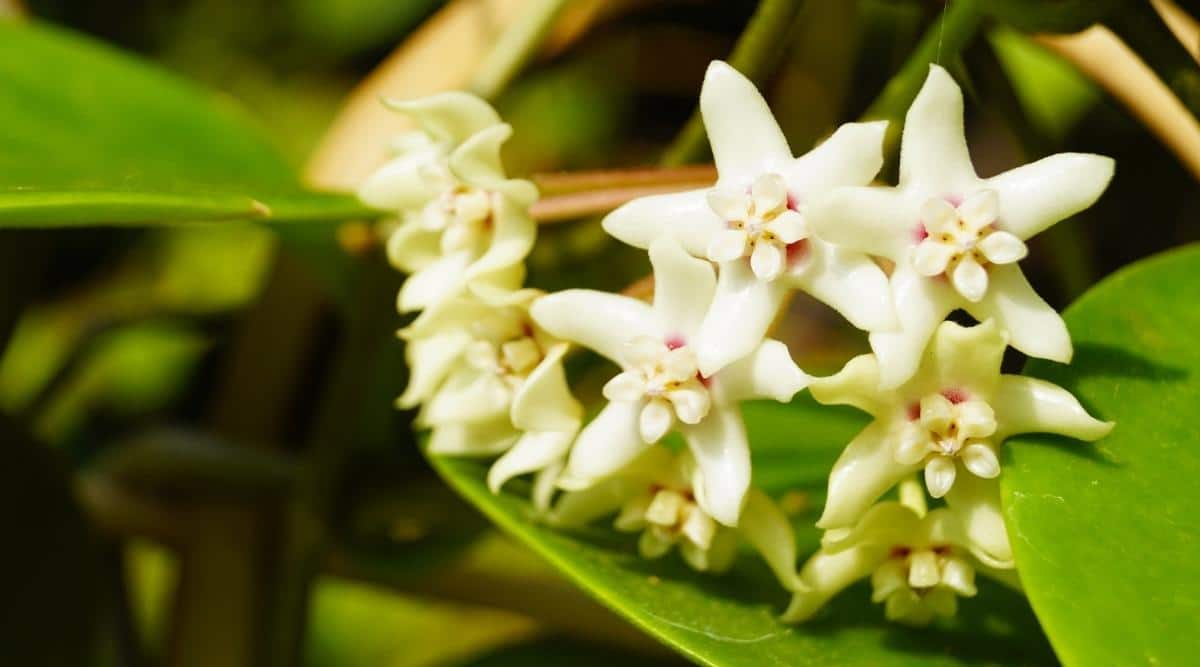
Scientific name: Hoya albiflora
With its rapid growth and impressive height of up to eight feet, the Hoya Albiflora produces large, white blossoms. Hailing from Southeast Asia, it thrives in full sun to partial shade, requiring temperatures above 57 degrees F and periodic fertilization during the growing season to enhance the bloom of its iconic star-shaped flowers.
Hoya Archboldiana
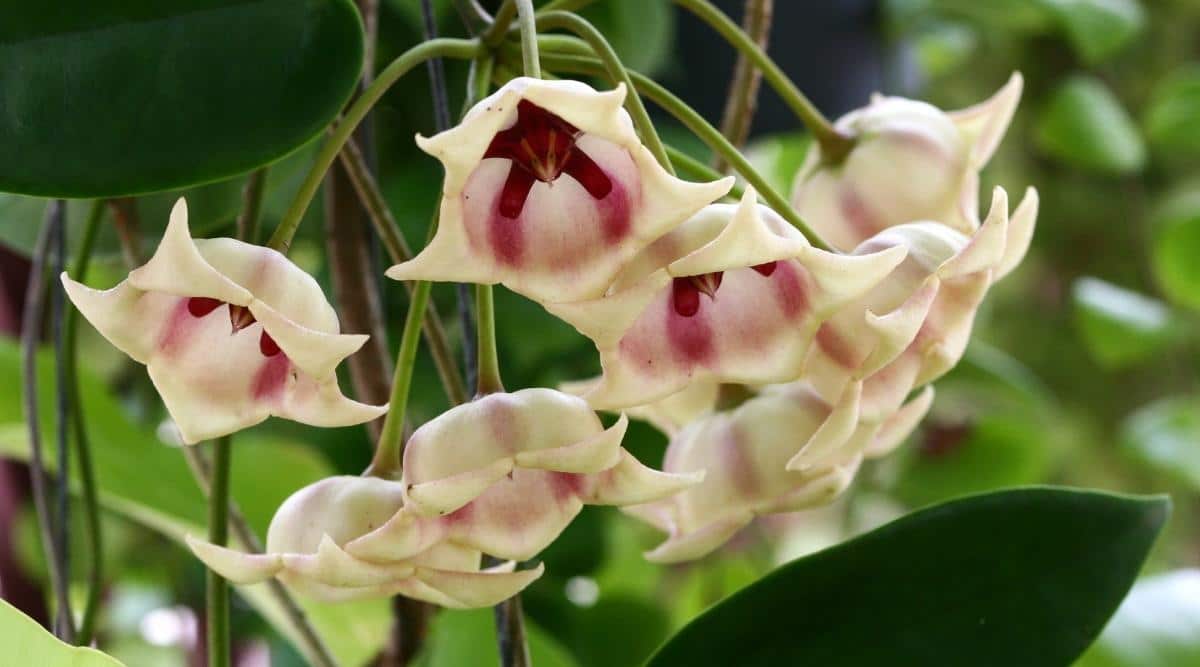
Scientific name: Hoya archboldiana
Indigenous to Indonesia, the Hoya Archboldiana showcases robust, serrated leaves and pink flowers with a purplish center, named after the renowned explorer and aviator Richard Archbold. Ensure ample sunlight and high humidity, use well-draining soil, and maintain regular watering during growth. In colder months, reduce watering frequency to bi-weekly.
The preferred temperature range for this plant is between 60 – 95 degrees F.
Hoya Australis (Blue Hoya)
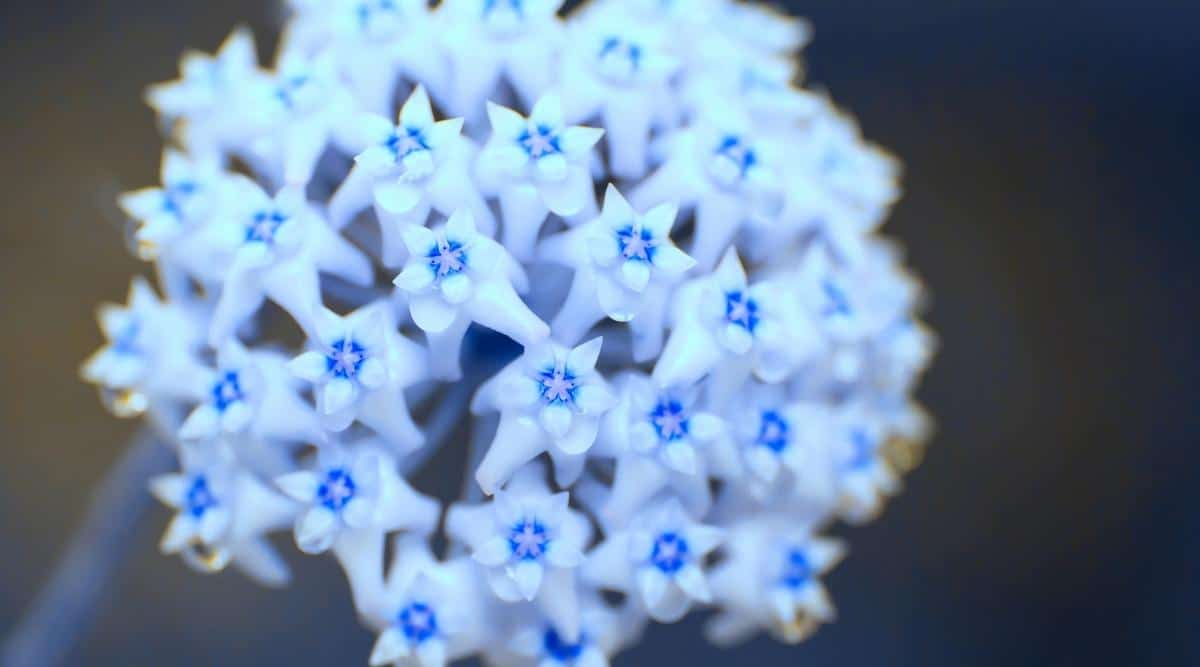
Scientific name: Hoya australis
Hailing from Australia, the Hoya Australis is famed for its fragrant white flowers. This climbing vine exhibits an upright growth pattern and can reach lengths of up to 32 feet. Butterflies are also attracted to its stunning blossoms, adding a magical touch to your garden. Ensure moderate watering and avoid over-fertilization to maintain its impressive stature.
Hoya Bella
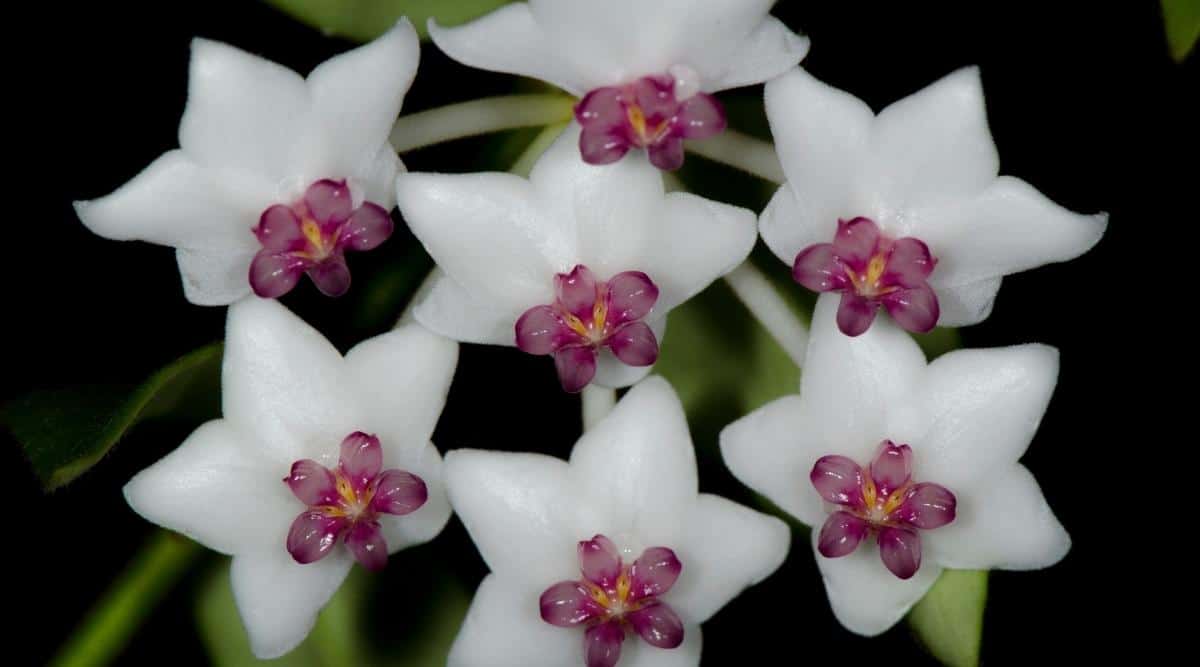
Scientific name: Hoya lanceolata bella
The Hoya Bella, originating from Myanmar, is a suitable plant for novice gardeners. It surprisingly thrives in cooler temperatures and requires minimal upkeep. To ensure its well-being, maintain consistent soil moisture and provide partial sunlight, avoiding direct exposure.
This plant, a subspecies of Hoya Lanceplata, typically grows epiphytically on other plants like trees in its natural habitat. To nurture it at home, a basic indoor potting mix and standard fertilizer will suffice.
Hoya Biblobata
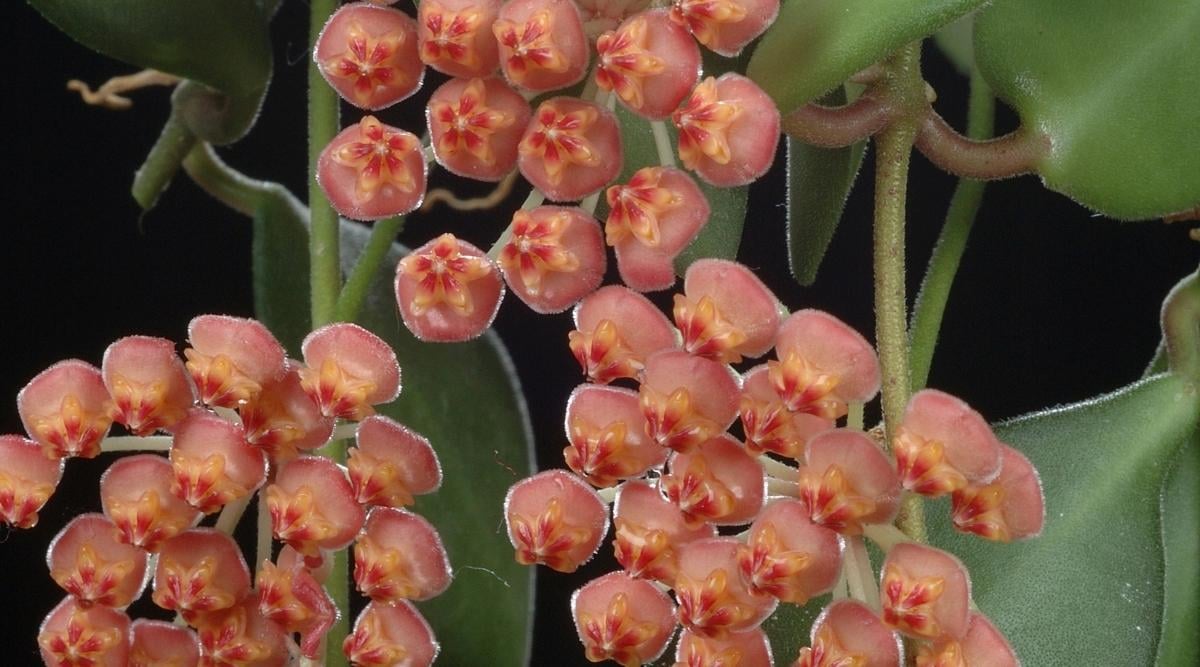
Scientific name: Hoya biblobata
Popular yet challenging to cultivate, Hoya Biblobata, native to the Philippines, is an evergreen flowering plant. Its trailing vines can extend up to 2 feet, boasting distinctive light green oval-shaped leaves with a smooth, leathery texture.
The plant produces up to 25 star-shaped dark red flowers in a compact cluster, exuding a captivating honey fragrance throughout the year. It thrives in bright, indirect light and requires a temperature range of 60–86°F, ideally suited for USDA zones 8-11.
Hoya Bicalcarata (Cape Honeysuckle)

Scientific name: Hoya bicalcarata
Hailing from the Cape of Good Hope in South Africa, Hoya Bicalcarata showcases trumpet-shaped flowers in intense orange hues, attracting hummingbirds. This low-maintenance evergreen shrub thrives in full sun, suitable for USDA hardiness Zones 9-11, and tolerates both alkaline and acidic soil.
Fertilization is optional, and the plant can be propagated as a shrub or vine. It prospers in a range of temperatures but requires dry soil before watering and moderation in fertilizer application.
Introducing the fascinating world of Hoyas, starting with the stunning Carnosa Variety. This particular Hoya, known scientifically as Hoya carnosa, is a fast-growing vine that showcases clusters of white flowers. Setting it apart from hoya australis is its yellow varnish. A perfect plant for beginners, the hoya carnosa thrives with bright, indirect sunlight and moderate temperatures around 75 degrees F. Ensure the soil remains light and airy, reducing watering during winter but preventing it from drying out completely. To enhance its growth, mist the leaves for added humidity.
Next up is the enchanting Hoya Caudata, discovered by Thomas Hoya in 1883, originating from Singapore and Thailand. This vining plant prefers bright sunlight, well-drained soil, and temperatures above 60 degrees. Its sweet-scented flowers serve as natural air fresheners, thriving in humidity and utilizing other plants for support. Hanging baskets are ideal for accommodating its expansive growth.
Let’s explore the alluring Hoya Cinnamomifolia, which flourishes in warm environments with indirect light, 60% humidity, and temperatures between 65-75 degrees F. Its star-shaped bright green and burgundy flowers bloom in late spring. With leaves that can grow up to 5.6 inches long, this plant demands monthly fertilization during spring and summer and well-monitored watering practices.
Unveiling the Hoya Compacta ‘Variegata,’ another slow-growing variety with waxy green leaves bordered by creamy white edges. Best suited for indirect light and well-draining soil, this hoya’s charming appearance makes it a captivating addition to any space, whether displayed in a hanging pot or left to cascade elegantly from a container.
Discover the exotic Hoya Coronaria, indigenous to Thailand, Malaysia, Borneo, and Singapore, featuring thick, waxy leaves and captivating star-shaped flowers in clusters. Embrace the short-lived blossoms that come in various colors, from purple to pale yellow cream, savoring their beauty while ensuring the plant receives ample sunlight and moderate watering.
Last but not least, immerse yourself in the delightful aroma of the Hoya Cumingiana, reminiscent of lemon, cinnamon, and mango. Patience is key as you await the blooming of this hoya’s fragrant flowers, offering a sensorial treat to any space lucky enough to host it.
Introducing a variety of captivating Hoya plants that will add a touch of elegance to your garden. These unique species offer a range of colors and fragrances to delight any plant enthusiast. Each plant has its own specific care requirements to ensure optimal growth and blooming.
The Hoya coreuiensis is a gorgeous plant with striking orange and yellow flowers. It takes patience to wait for the blooms, which appear in clusters of 5-10, but the wait is worth it when you finally see and smell the beautiful flowers.
Originating from the Philippines and Java, this evergreen plant is surprisingly low-maintenance. Being a succulent, it doesn’t need frequent watering. Allow the soil to dry out before watering to prevent root fungus. A monthly dose of fertilizer will help these plants thrive.
Hoya Diversifolia
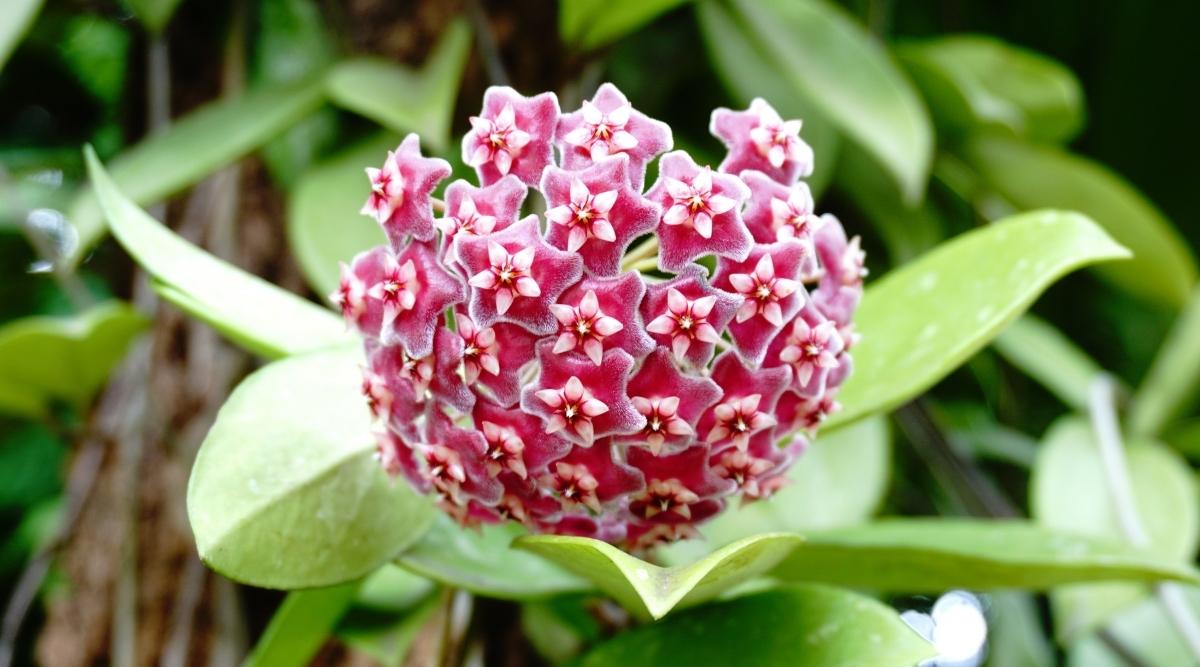
Scientific name: Hoya diversifolia
During summer, ensure your Hoya Diversifolia plants receive adequate watering and partial shade. In colder months, move them indoors and reduce watering frequency.
The Hoya krohniana eskimo is a houseplant native to Southeast Asia, bearing sweet-scented flowers in clusters. Also known as the “Heart-Leafed Lacunosa,” this plant thrives in well-drained soil with access to full sun or partial shade. Allow the soil to dry out between waterings to promote healthy growth of its distinct green leaves.
Hoya Eskimo
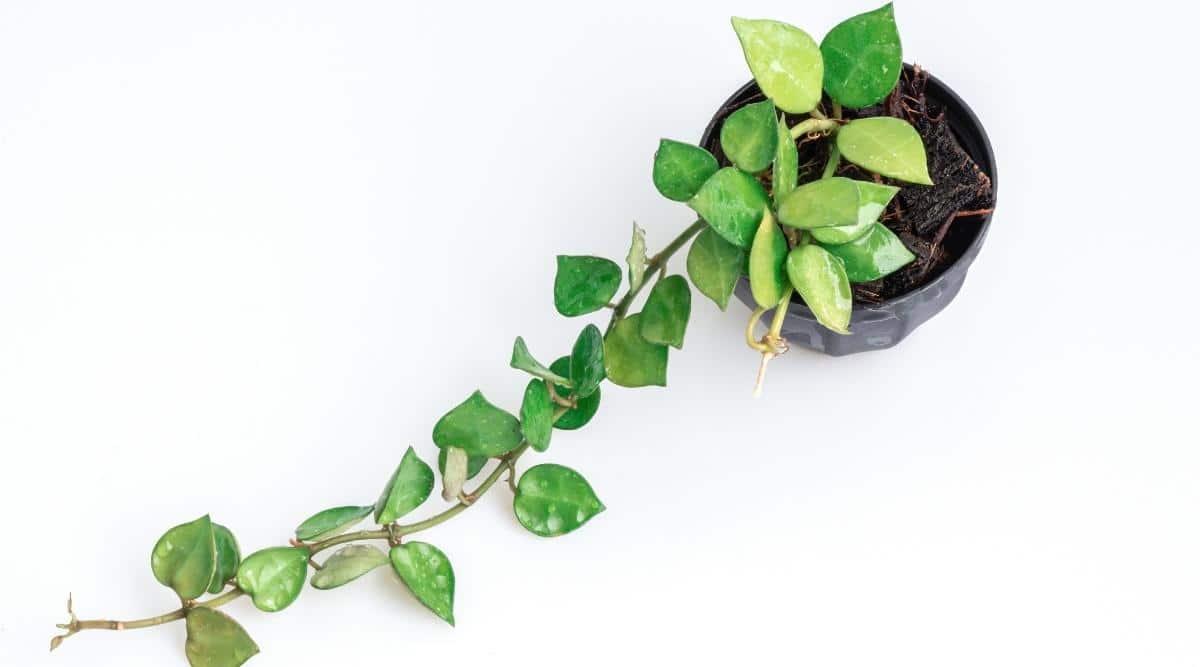
Scientific name: Hoya krohniana eskimo
The Hoya finlaysonii, a tropical evergreen from Malaysia, thrives in light shade. Its light green leaves with dark veins add an exotic touch, complemented by white and maroon cinnamon-scented flowers in summer.
Providing well-drained, nutrient-rich soil is key to the Hoya finlaysonii’s success. Mimic its natural habitat by supplementing the soil with nutrients like perlite, peat moss, or charcoal for optimal growth. Maintain a temperature above 70 degrees F and humidity between 60 to 80% for optimal growth.
Hoya Finlaysonii

Scientific name: Hoya finlaysonii
The Hoya fitchii is a charming species with color-changing flowers ranging from orange to pink to yellow. Named after Charles Marsden Fitch, who discovered it in the Philippines, these plants are easy to care for. Water sparingly and provide some sunlight for optimal growth.
The Hoya fraterna is a rapid-growing plant that produces salmon-colored flowers with a distinctive banana scent. Bright to medium light and well-drained soil are essential for its growth. Enjoy the blooms that last for five days and reach heights of up to 10 feet during the growing season.
Hoya Fraterna
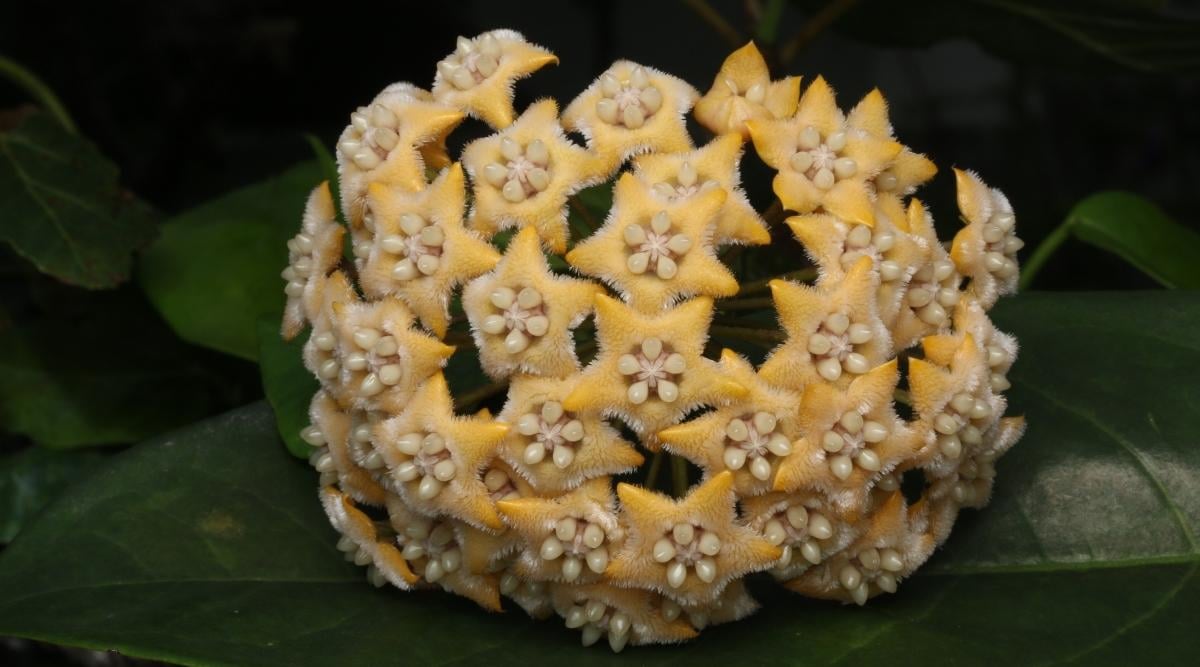
Scientific name: Hoya fraterna
Finally, the Hoya fitchii entices both novice and experienced plant enthusiasts with its stunning color combination. With proper care, including occasional watering and adequate sunlight, this plant will thrive. Witness the delicate flowers and vibrant foliage that elevate any indoor space.
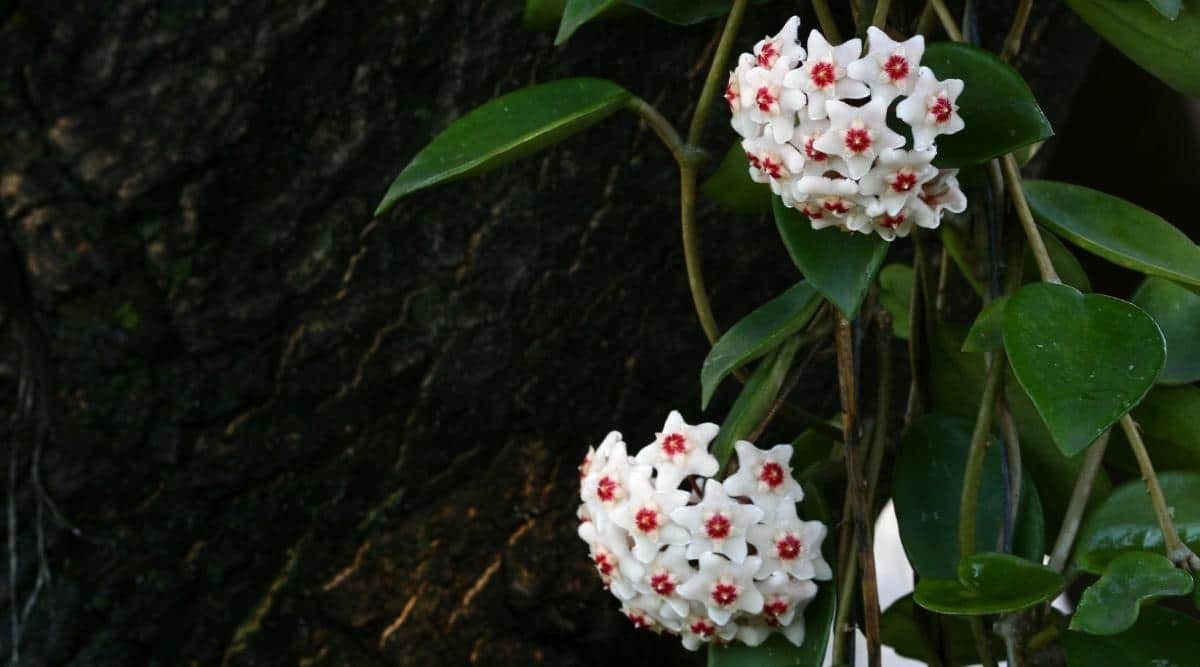
Scientific name: Hoya fungi
Originating from southern China, Hoya Fungii is a fast-growing epiphytic plant that can reach heights of up to ten feet. It thrives in bright sunlight to partial shade and prefers temperatures above 57 degrees Fahrenheit.
Characterized by waxy leaves, this plant produces beautiful white flowers with striking red centers that grow in clusters, emitting a sweet fragrance.
Hoya Imperialis
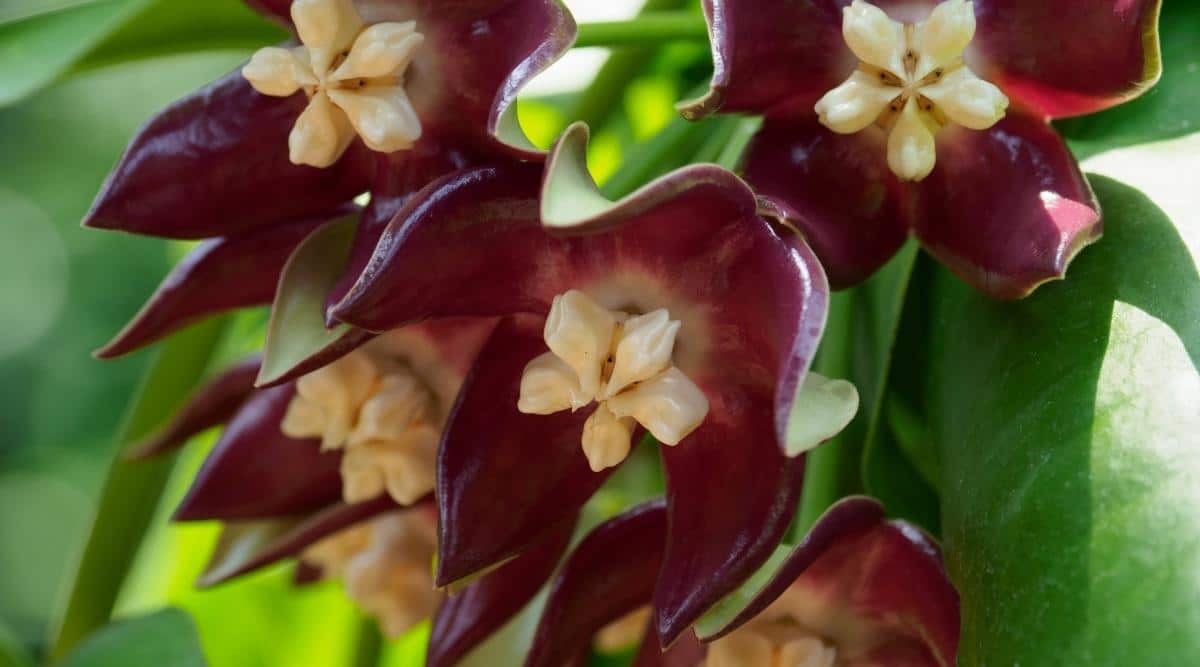
Scientific name: Hoya imperialis
Hailing from Thailand, Borneo, and Malaysia, Hoya Imperialis showcases large, captivating flowers that come in shades of mauve or maroon, exuding a sweet and mildly spicy aroma.
These climbing plants with thick leaves and epiphytic tendencies are typically found in forest trees near rivers and lowlands. They thrive in low humidity conditions but require ample water and good drainage.
Hoya Inconspicua

Scientific name: Hoya inconspicua
Native to the Solomon Islands, Hoya Inconspicua grows rapidly and blooms small, fragrant flowers for several months. Its umbels boast between 15 to 30 captivating purple-red flowers when in full bloom.
This vining epiphytic plant is ideal for hanging pots but requires caution as it tends to twine around nearby objects.
Hoya Limoniaca
The fascinating Hoya Limoniaca, a low-maintenance vine, finds its origins in New Caledonia. Not only does it boast a rapid growth of up to 40 inches, but it also flaunts beautiful small white flowers that bloom during warm seasons, enhancing its allure. Often confused with the hoya princess due to their striking resemblance.

Scientific name: Hoya limoniaca
To thrive, provide partial shade, allow the soil to dry between waterings, and maintain a soil pH of 6.3 to 7.5. The plant enjoys a temperature range of 60-85°F and humidity levels around 80%.
Hoya Linearis
Meet the rare Hoya Linearis from the Himalayan mountains, known for its delicate leaves that cannot withstand direct sunlight. This variety thrives in high humidity, cool temperatures, and at high altitudes. Regular feeding during its growing season and occasional trimming to propagate more plants are beneficial practices. Care should be taken with the latex sap present in its leaves.

Scientific name: Hoya linearis
Remember to keep these beautiful climbers in indirect light, feed them twice a month, and handle the leaves with care due to their delicate nature.
Hoya Macrophylla
Introducing the stunning Hoya Macrophylla with its vibrant yellow-edged green leaves and creamy white fragrant blooms that open at night. These plants make excellent indoor companions, thriving away from direct sunlight with proper care.
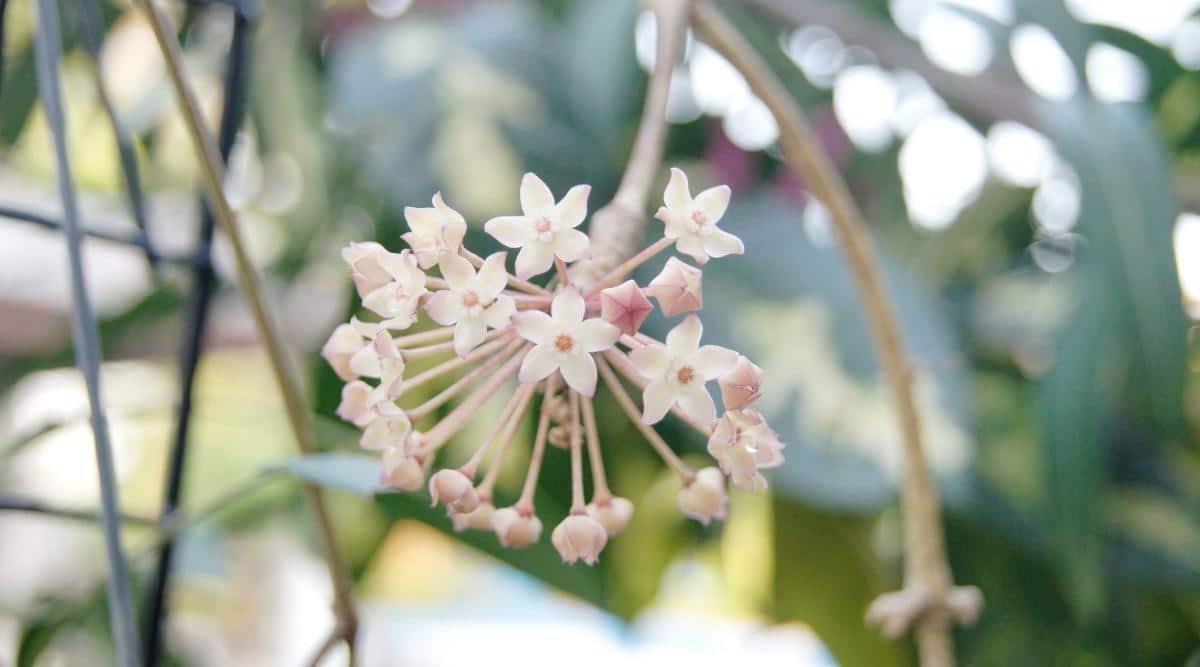
Scientific name: Hoya macrophylla
Adaptable to various environments, Hoya Macrophylla, like other epiphytes, derives nutrients from surrounding sources and can live long with the right conditions.
Hoya Megalaster
The tropical Hoya Megalaster from Papua New Guinea is a climbing epiphyte that thrives in well-draining soil with good nutrient content like perlite and orchard bark. Providing over 60% humidity during growth, moderate sunlight, and careful watering ensures the best conditions for this plant.
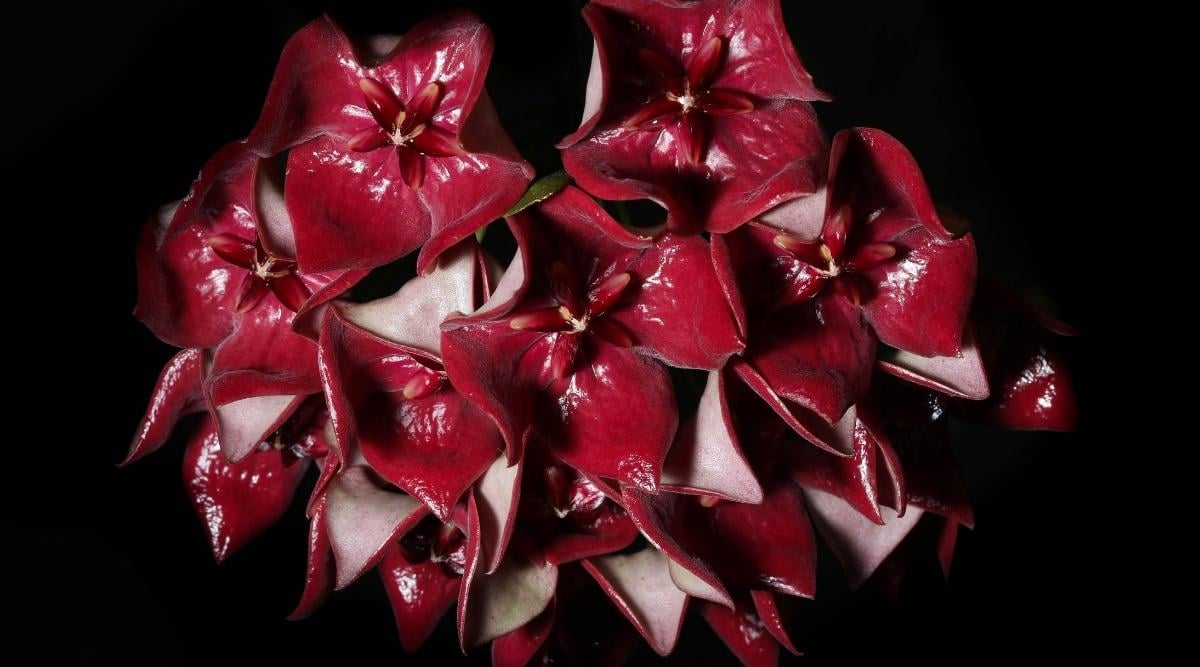
Scientific name: Hoya megalaster
Flourishing with pink blossoms and succulent leaves, Hoya Megalaster is a delightful addition to any garden, offering beauty that lasts for years.
Hoya Meliflua
Discover the charming Hoya Meliflua, a native of the Philippines thriving at high elevations with ideal conditions of high humidity, well-drained soil, and temperatures between 68-77°F. The plant, known as “Blanco Merr” or little fraterna, requires a porous potting medium to ensure proper airflow around its roots.
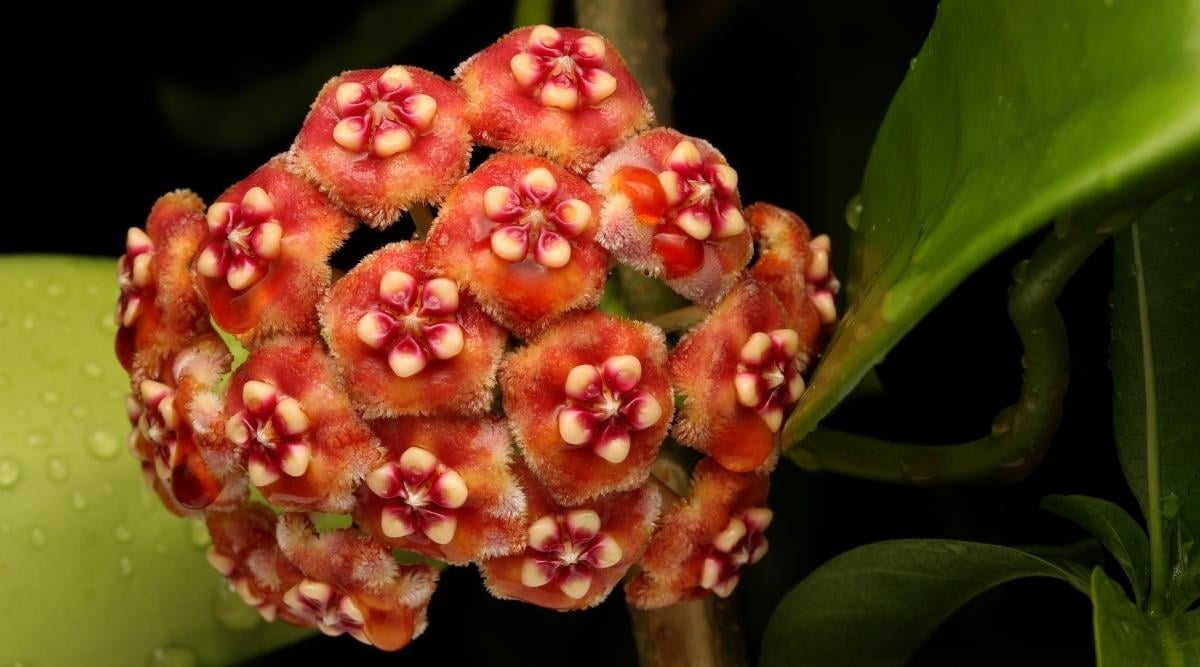
Scientific name: Hoya Meliflua
For optimal growth, maintain a soil pH of 6.1 to 6.5 and place the Hoya Meliflua in USDA hardiness zones 10 to 12 to ensure a thriving and long-lasting addition to your green space.

Name: Hoya memoria
A moisture-resistant plant, the Hoya Memoria can withstand thorough watering provided the soil is allowed to dry adequately. While promoting growth up to 6.5 feet, monthly fertilization is recommended. Originating from Sulawesi, this plant thrives in environments with high humidity.
Its pinkish-purple flowers, emerging from leaf spurs, develop seasonally from the same spurs. These blooms exhibit a fuzzy texture and emit a sweet, heavy scent. The flowering period extends from spring to late summer over a three-month span.
Hoya Meredithii
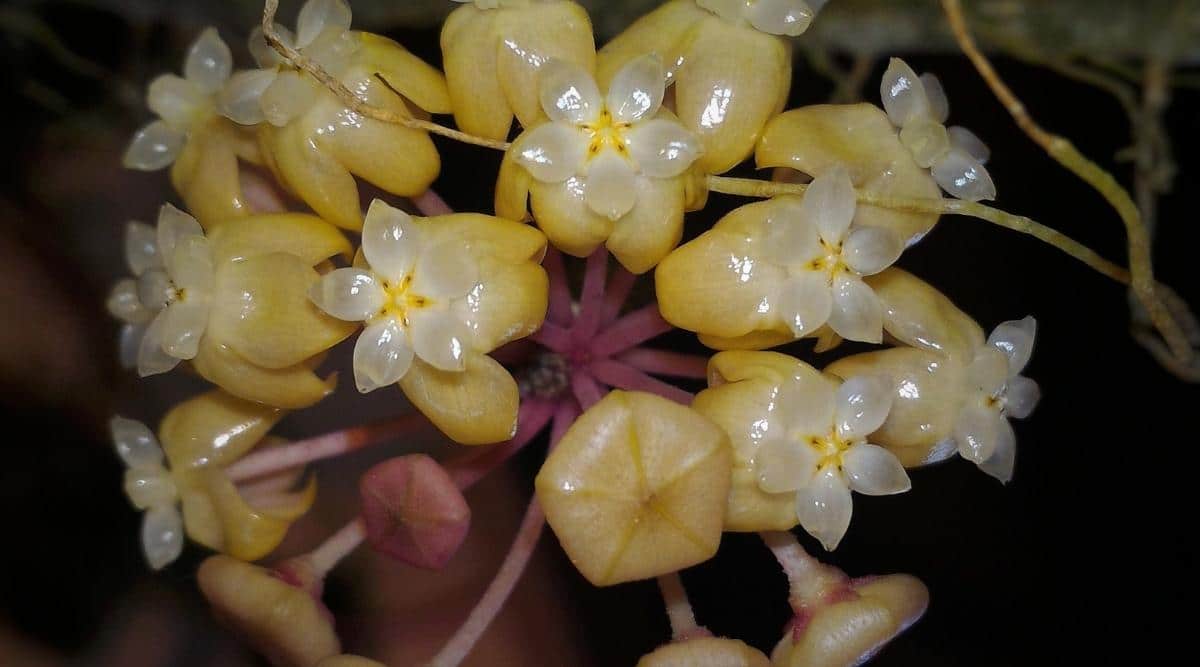
Name: Hoya meredithii
With striking golden-hued flowers in an umbel arrangement, these plants, like other Hoya varieties, only bloom for a brief period of five days. They require ample watering but can thrive in moderate sunlight. During the growth phase, occasional low-dose fertilization is beneficial.
Hoya Mindorensis

Name: Hoya mindorensis
An evergreen climber native to the Philippines, Hoya Mindorensis thrives outdoors, displaying an epiphytic growth pattern on trees in humid forests. While intolerant of excessive heat, it flourishes in moderate temperatures. Typically, these plants bear red flowers, although pink and yellow variations are also observed, with up to 40 flowers per umbel, emitting a mild fragrance.
Hoya Multiflora

Name: Hoya multiflora
Referred to as “Shooting Stars,” the Hoya Multiflora features clusters of star-shaped flowers that create a visually striking appearance resembling shooting stars. Apart from its aesthetic appeal, these flowers release a sweet fragrance. This bushy shrub, growing up to 8 feet, is an epiphyte originating from Thailand, Borneo, the Philippines, and Indonesia, requiring minimal watering and partial shade.
The Hoya Obovata is a plant from Indonesia that enjoys bright, indirect light. These plants have thick, waxy leaves that retain water, and their attractive appearance and rapid growth rate make them popular among plant enthusiasts. The Hoya Obovata can reach lengths of up to 20 feet, producing light pink or white flowers that bloom after about two years.
The Hoya Obscura, native to the Philippines, thrives in moderate lighting conditions to prevent leaf burn. Well-drained soil and high humidity contribute to ideal growing conditions, resulting in glossy, veiny, and waxy leaves. This plant produces white flowers that start as cream or pink before turning yellow, indicating they are close to dropping off.
Coming from Thailand, the Hoya Pachyclada is also known as the wax plant or porcelain flower and requires patience due to its slow growth. Placing it in direct sunlight, high humidity, and well-drained soil is essential for its development. The plant’s dense, thick leaves with red edges produce star-shaped flowers that cluster into a ball shape, requiring only monthly compost tea for fertilization.
The Hoya Pauciflora is a semi-succulent plant with waxy leaves that bloom star-shaped white flowers with purple centers from spring to early fall. This vining epiphytic species hails from southwest India and Sri Lanka, thriving in high humidity and well-drained soil while needing bright, indirect light to avoid leaf burn.
The Hoya Plicata features long, oval leaves with raised veins and distinctive flowers, thriving in full sun or partial shade. This evergreen succulent vine can be maintained by regular stem trimming, suitable for both indoor and outdoor cultivation in climates above USDA zones 10b.
The Hoya Polyneura from China and the Himalayas boasts numerous venous leaves resembling the tails of exotic fish, earning it the name “polyneura.” These plants add an exotic touch with their diamond-shaped leaves adorned with blue-green veins.
For those who enjoy bright light with occasional direct sunlight, these plants are a great choice. They require minimal water but benefit from monthly fertilizing during active growth. Keep an eye out for wrinkling leaves as a sign of stress, often caused by inadequate soil drainage.
When grown indoors, this plant can reach heights of up to 6.5 feet and only needs repotting every two years.
Hoya Pottsii
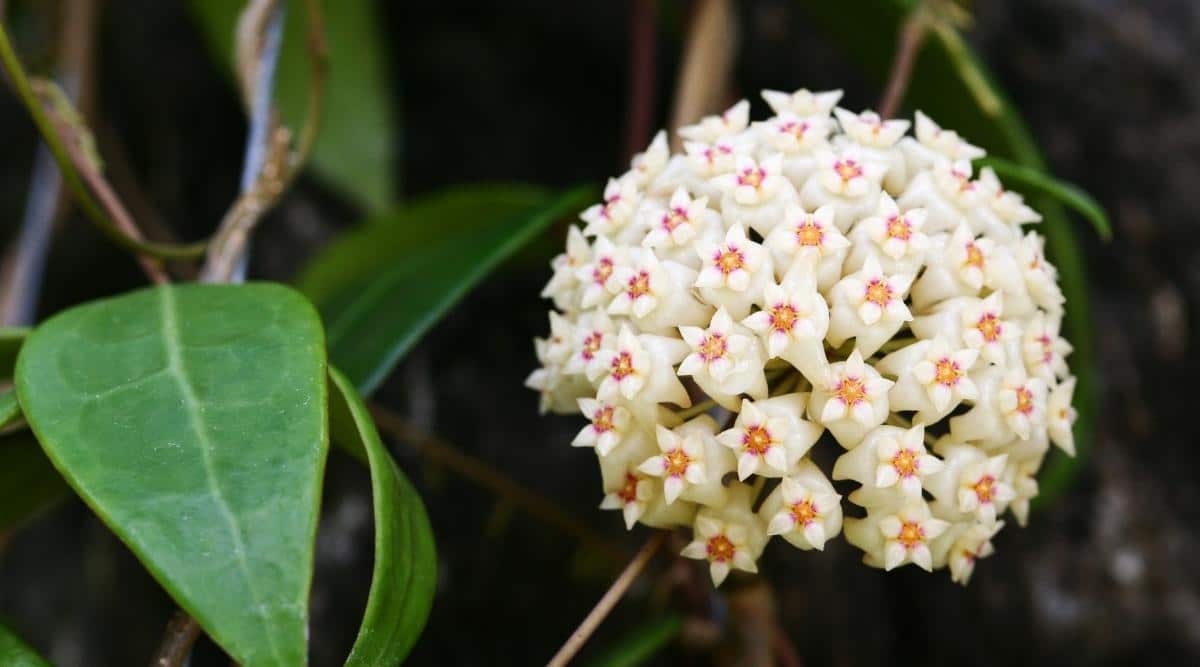
Scientific name: Hoya pottsii
Hoya Pottsii thrives with ample sunlight and warm temperatures. Keep an eye out for the vibrant clusters of flowers that can bloom in various colors, with each fragrant cluster containing numerous flowers, some up to 20 in number.
Native to Polynesia, Australia, and New Guinea, Hoya Pottsii often exhibits a twining growth pattern.
Hoya Pubicalyx

Scientific name: Hoya pubicalyx
The Hoya Pubicalyx is a mottled plant known for its low maintenance, drought resistance, and rapid growth. It emits a sweet fragrance and can grow to heights of 8-10 feet.
These plants thrive in organic well-drained soil with a pH level between 6.5 and 7.5. Position them near a sunny window for indirect bright light and maintain indoor temperatures between 60 and 75 degrees F.
Varieties of Hoya Pubicalyx include Pink Silver, Black Dragon, Red Buttons, Royal Hawaiian Purple, and Jungle Garden.
Hoya Purpureofusca
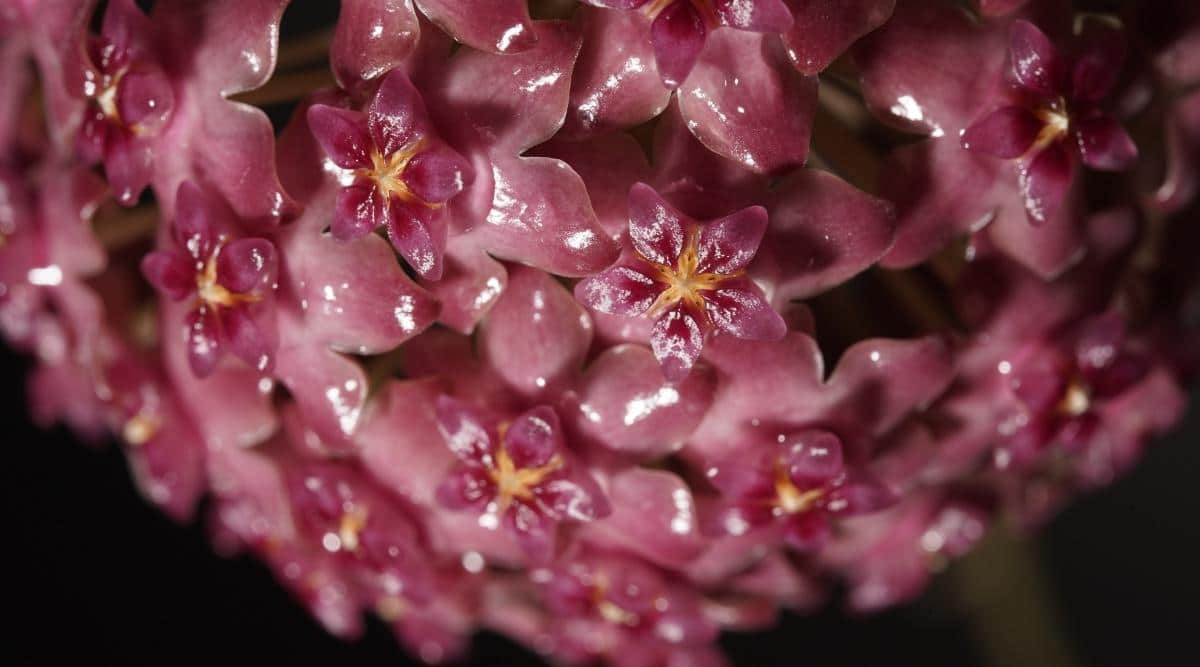
Scientific name: Hoya purpureofusca
Hoya Purpureofusca, originating from Southeast Asia, is an evergreen plant that produces flowers from spring to fall. These flower clusters showcase a variety of colors such as dark purple or pink.
Providing full sun or bright shade, well-drained soil, and sufficient watering will yield ideal blooms for this plant. The vine can grow up to ten feet, especially in USDA zones 11-12.
Hoya Retusa
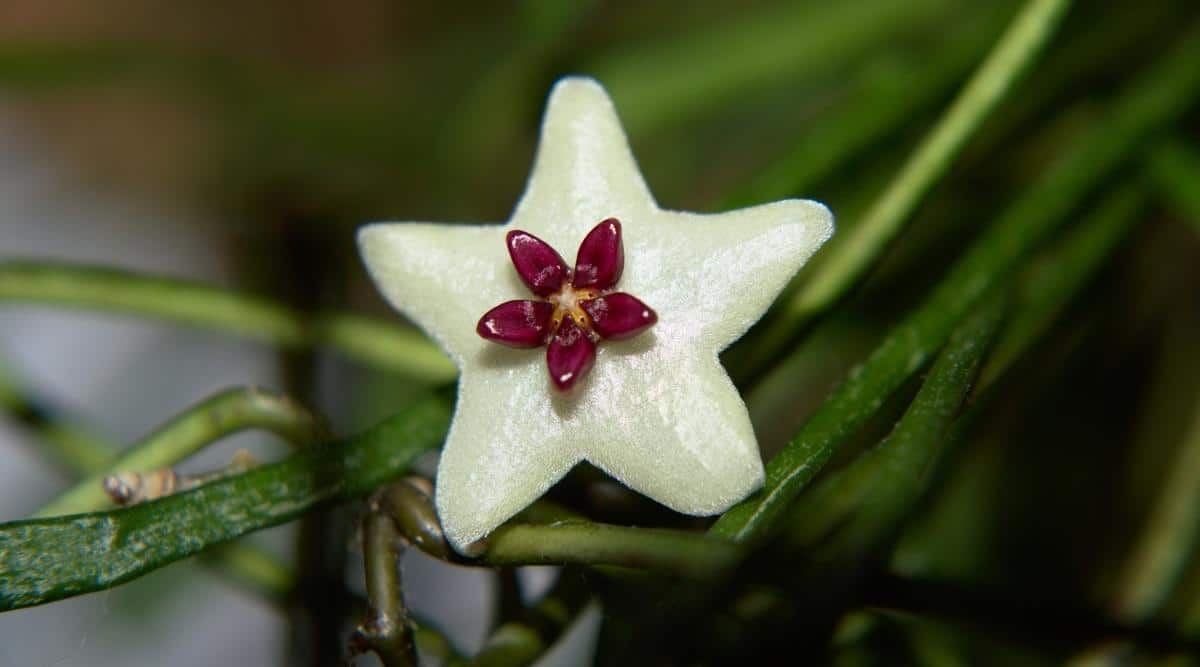
Scientific name: Hoya retusa
Hoya Retusa displays slender, grass-like leaves and delightful white star-shaped flowers during its flowering season. These charming plants, native to Southeast Asia, require well-draining soil.
Place them in areas with bright indirect light within the home and maintain temperatures between 50 -80 degrees F with good ventilation. Be cautious of root rot as Hoya Retusa is sensitive to overly moist conditions.
Hoya Serpens
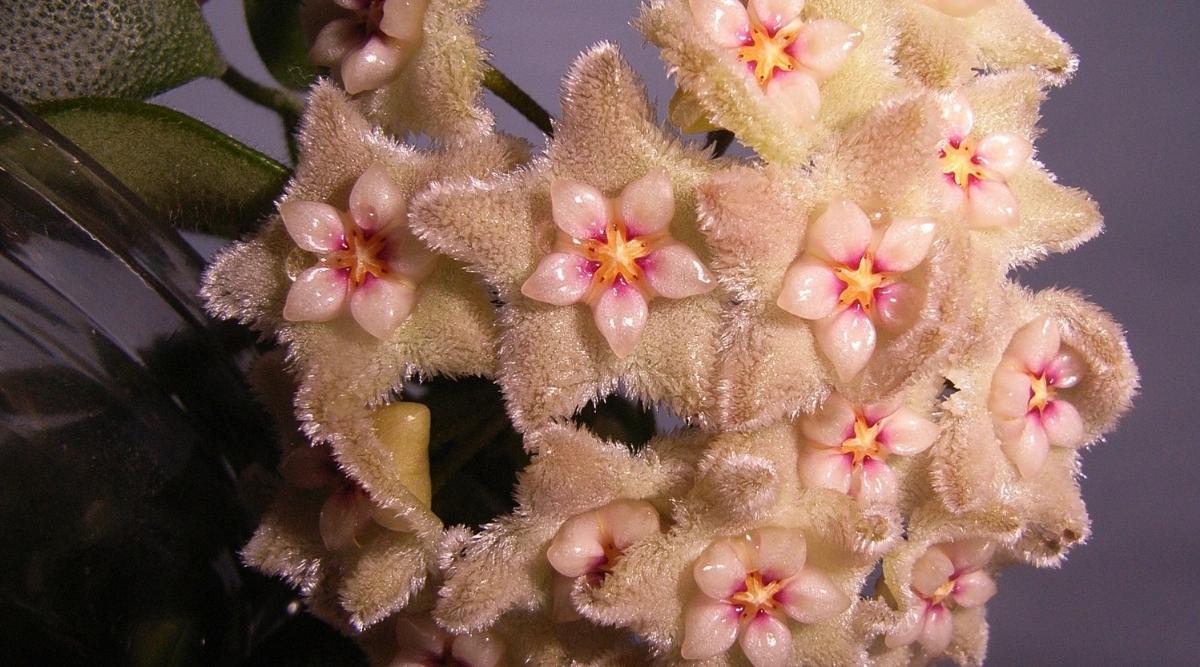
Scientific name: Hoya serpens
You can cultivate these plants either in a garden or indoors, enjoying their subtly fragrant blooms throughout the year. Maintaining a regular watering routine and ensuring well-aerated soil with a pH balance between 6.0 and 7.0 is crucial for their growth.
Gardeners appreciate the pale green flowers coupled with perfectly round leaves of this plant. The enticing scent of the summer blooms intensifies, particularly in filtered bright light settings.
Hoya Shepherdii
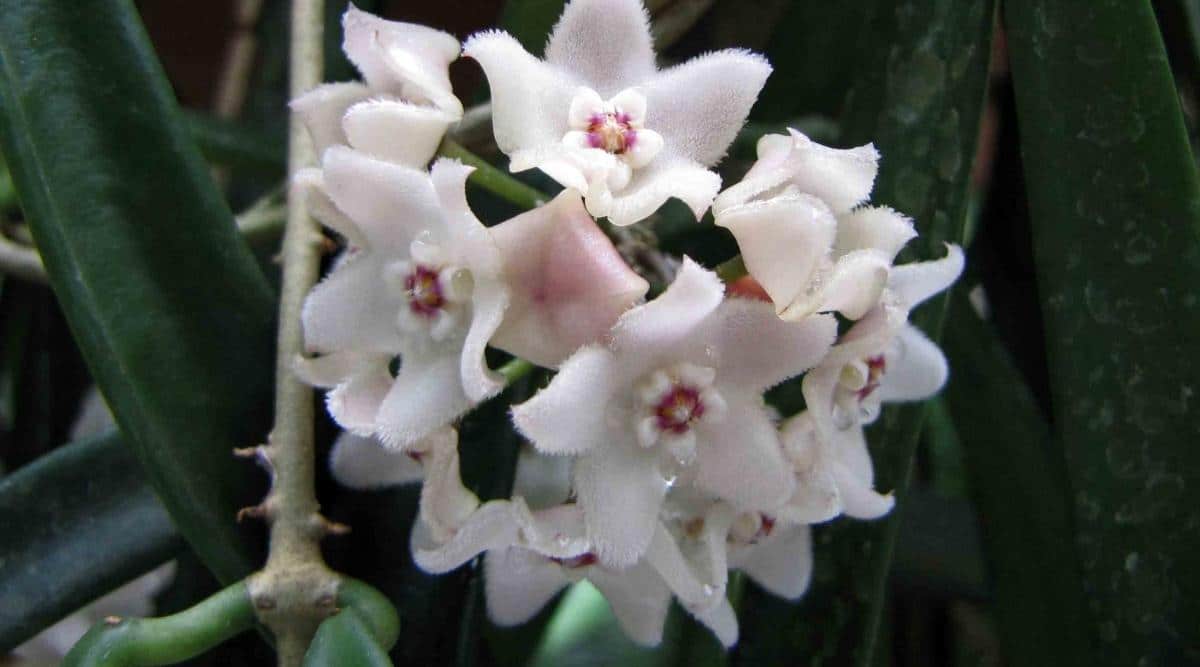
Species Identification: Hoya shepherdii
This particular Hoya variant, known as the String Bean Hoya, is characterized by its fragrant creamy white flowers with pink centers that bloom in small clusters. The plant’s long vines bear leaves with a glossy texture, reminiscent of string beans, making it an aesthetically appealing addition to any space.
Easy to cultivate, this plant thrives on regular hydration and moderate light exposure. While adequate watering is crucial, it’s essential to allow the soil surface to dry out between watering sessions. Notably, Hoya shepherdii is adaptable to various levels of humidity, simplifying its care routine.
Image Credit: 阿橋 HQ via Creative Commons (Image Use Permitted With Attribution)
Hoya Skinneriana
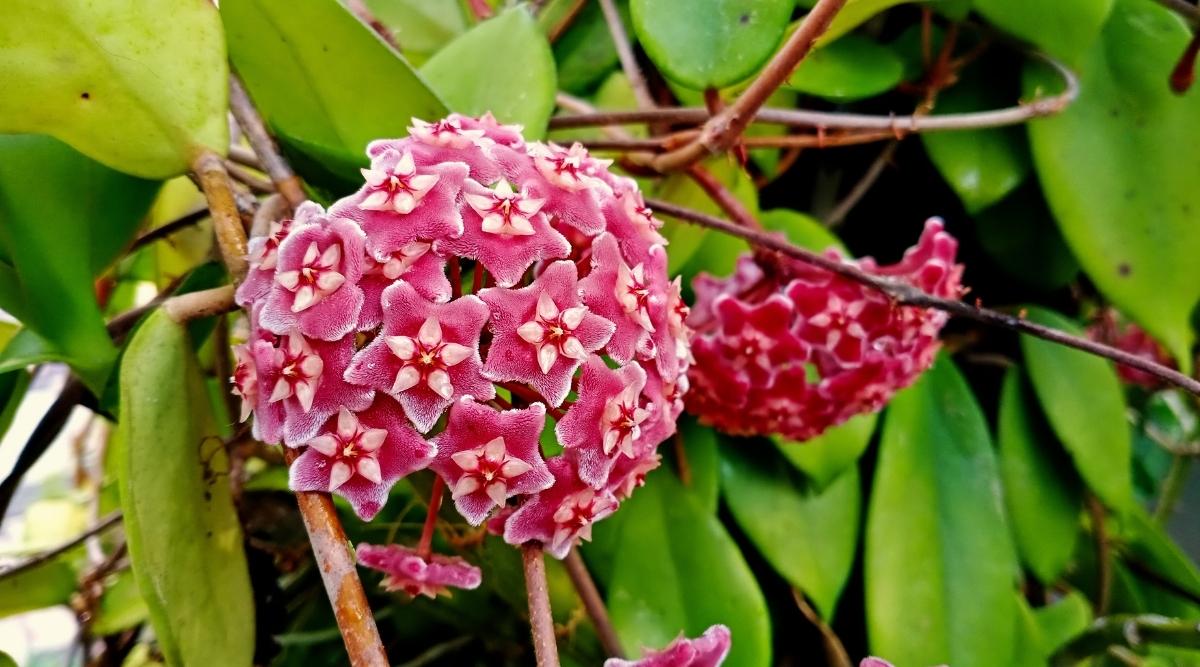
Species Identification: Hoya skinneriana
Thriving in bright, artificial light conditions, Hoya Skinneriana is a succulent vine that demands full sun to partial shade exposure. To ensure optimal growth, plant it in slightly acidic soil with a pH ranging from 6.1 to 6.5 and maintain temperatures above 57 degrees F.
An evergreen species, Hoya Skinneriana can reach heights of up to 12 feet, attracting hummingbirds with its charming pink blooms when cultivated outdoors. Its robust nature and decorative appeal make it a popular choice among plant enthusiasts.
Hoya Wayetii
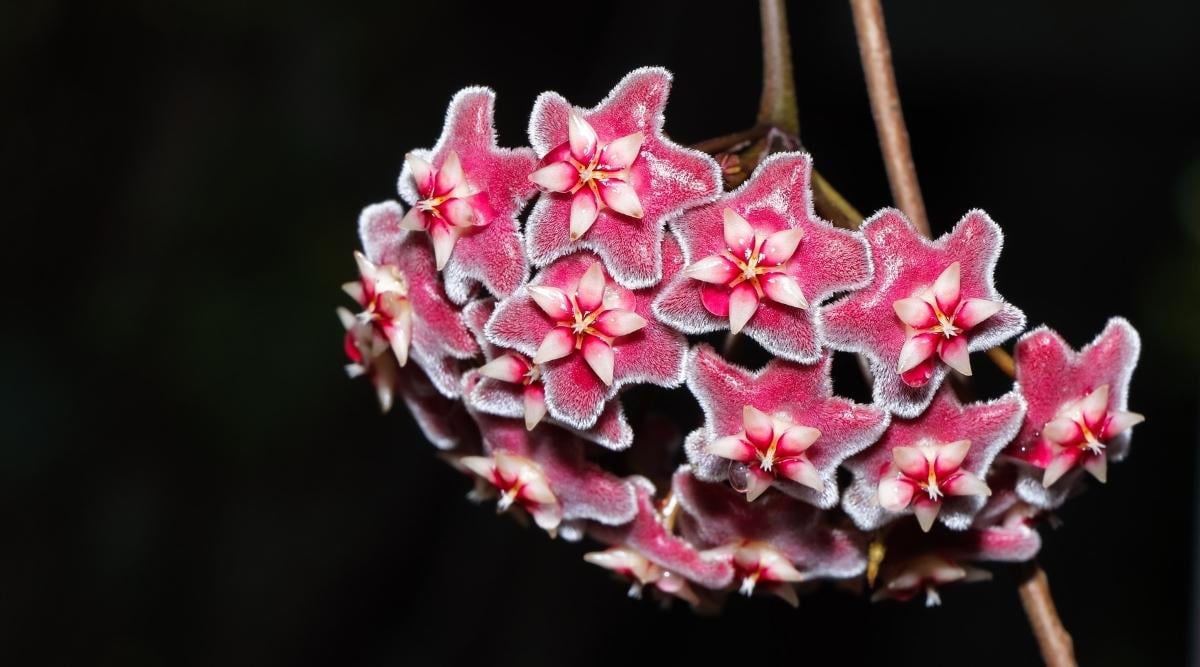
Species Identification: Hoya wayetii
The indigenous to the Philippines, Hoya wayetii, can produce trails reaching up to 30 inches in length. This species thrives both indoors and outdoors, flourishing in environments with full sun or partial shade exposure.
Adaptable to varying humidity levels, Hoya wayetii is a slow-growing plant recognized for its beautiful and distinctive leaves. Initially, the plant forms mounds up to 4 inches before extending into graceful trailing growth patterns.
Occasionally, clusters of tiny red or mauve flowers may emerge, enhancing the visual appeal of this species. The elongated slender leaves, featuring red edges, contribute further to its vibrant coloration.
Closing Remarks
The Hoya Cultivars present a diverse range of plants, predominantly originating from Southeast Asia, where they thrive in humid conditions. Known for their fragrant blossoms that often attract hummingbirds, these plants exhibit characteristic umbel and star-shaped floral arrangements.
Featuring an array of leaf shapes, from waxy to fuzzy, heart-shaped, oval, and resembling string beans, Hoya plants not only enhance indoor spaces but also serve as natural air purifiers. Whether as houseplants or additions to exotic gardens, Hoyas offer an appealing option for plant enthusiasts seeking both beauty and functionality.

